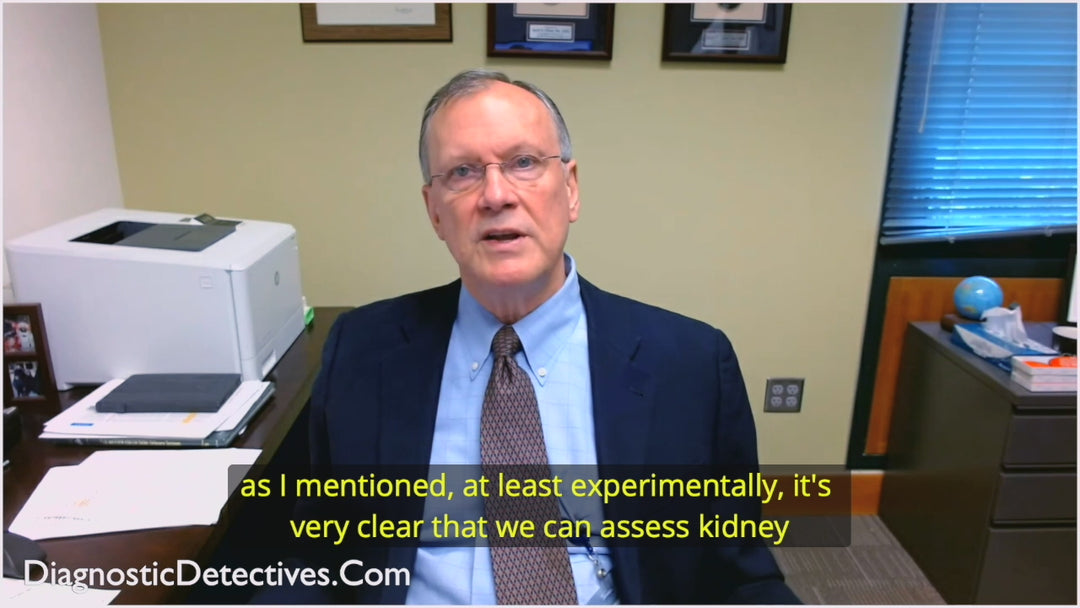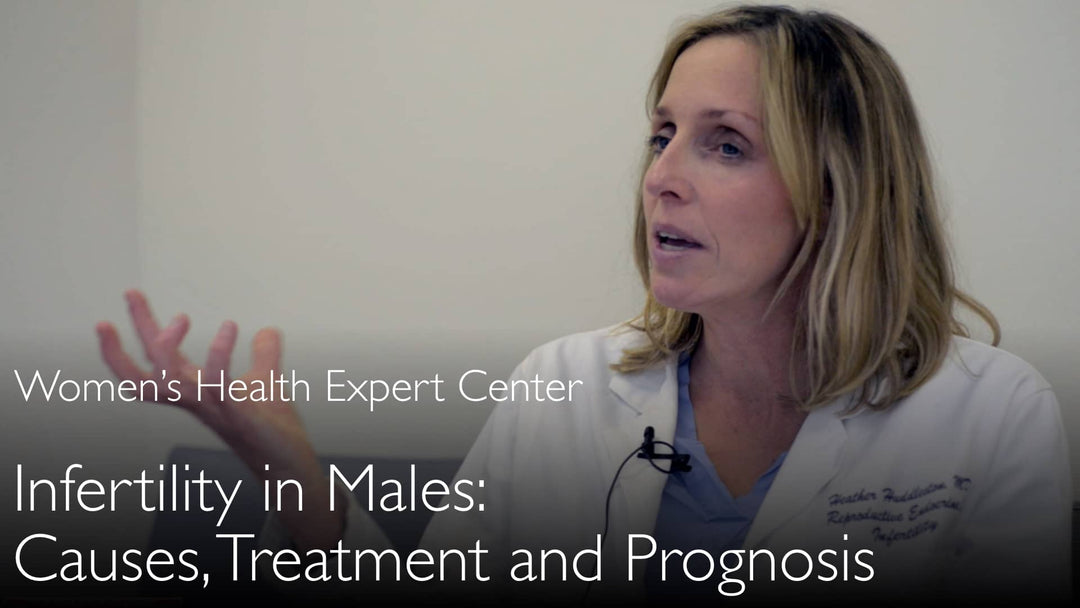Leading expert in prostate cancer treatment, Dr. Mark Emberton, MD, explains how focal therapy, a tissue-preserving approach, dramatically improves the therapeutic ratio by targeting cancer within the prostate to eradicate disease while preserving sexual function and continence in over 90% of patients, offering a day-case procedure with minimal side effects compared to traditional interventions.
Focal Therapy for Prostate Cancer: Preserving Sexual Function and Urinary Control
Jump To Section
- The Prostate Cancer Treatment Challenge
- Understanding the Therapeutic Ratio
- How MRI Transforms Prostate Cancer Care
- What is Focal Therapy?
- Focal Therapy Success Rates and Benefits
- Long-Term Outlook for Prostate Cancer Patients
The Prostate Cancer Treatment Challenge
Choosing the best prostate cancer treatment requires a delicate balance between achieving a cure and preserving critical quality-of-life functions. Dr. Mark Emberton, MD, emphasizes that this negotiation is one of the most complex and satisfying aspects of clinical practice for urologists. The primary goal is to maximize curative potential while ensuring the preservation of sexual function, urinary continence, and rectal function after therapy.
Dr. Anton Titov, MD, highlights the importance of this balance for patients considering their treatment options. Prostate cancer presents a unique challenge because some trials, like the PIVOT study, have shown minimal survival difference between intervention and active surveillance in certain cases.
Understanding the Therapeutic Ratio
The concept of therapeutic ratio is central to prostate cancer treatment decisions. Dr. Mark Emberton, MD, explains that therapeutic ratio represents the probability of doing benefit versus the probability of doing harm. In prostate cancer, this ratio is particularly low, meaning many patients may experience treatment side effects while relatively few derive significant survival benefit from intervention.
This challenging reality has driven the medical community to develop new approaches to prostate cancer care. Traditional radical treatments like prostatectomy and radiotherapy often affect critical structures surrounding the prostate, leading to potential complications with erectile function, urinary continence, and bowel function.
How MRI Transforms Prostate Cancer Care
The advent of high-quality MRI imaging has revolutionized prostate cancer risk stratification and treatment planning. Dr. Mark Emberton, MD, notes that MRI technology enables clinicians to move away from treating the entire prostate gland to specifically targeting the cancer within it. This precision allows for preservation of the prostate's architecture and the critical nerves, blood supply, and surrounding structures.
By identifying the exact location and extent of cancer, MRI guidance helps protect the neurovascular bundles responsible for erectile function, the urinary sphincter mechanism for continence, and the rectal wall for bowel function. This imaging advancement forms the foundation for tissue-preserving approaches to prostate cancer therapy.
What is Focal Therapy?
Focal therapy, also known as tissue-preserving therapy or tissue-selective therapy, represents a paradigm shift in prostate cancer treatment. Dr. Mark Emberton, MD, describes this approach as targeting only the cancerous areas within the prostate while sparing healthy tissue. This method specifically aims to diminish harms to the nerves, blood supply, rectum, anal sphincter, and bladder—all crucial structures for maintaining genitourinary function.
The development of focal therapy has been the subject of extensive research over the past 6-7 years, with clinical trials demonstrating both safety and efficacy. Dr. Mark Emberton, MD, and his team have focused on proving that this approach can effectively eradicate cancer while preserving quality of life.
Focal Therapy Success Rates and Benefits
Current evidence shows impressive results for focal therapy in appropriately selected prostate cancer patients. Dr. Mark Emberton, MD, reports that this approach can eradicate cancer in approximately 90% of patients. Some individuals may require a second treatment session, while a minority might need to proceed to surgery or radiotherapy if cancer persists.
The functional outcomes are particularly remarkable. Focal therapy is performed as a day-case procedure, allowing patients to return home the same day. Most importantly, Dr. Mark Emberton, MD, can confidently tell patients they will not experience incontinence and have a 90-95% chance of maintaining erectile function after treatment—a dramatic improvement over traditional therapies.
Long-Term Outlook for Prostate Cancer Patients
While focal therapy shows excellent short-term outcomes, the long-term cancer control data is still evolving. Dr. Mark Emberton, MD, acknowledges that the approach hasn't been practiced long enough to have 10-15 year survival data, which is ultimately necessary to confirm its curative potential. The primary endpoint remains helping patients live longer without dying from prostate cancer.
However, Dr. Mark Emberton, MD, emphasizes that there's no question focal therapy dramatically improves the side effect profile of prostate cancer treatment. This tissue-preserving approach represents a major advancement in balancing therapeutic benefits against quality-of-life preservation, offering men a compelling alternative to traditional radical treatments.
Full Transcript
Dr. Anton Titov, MD: How to choose the best prostate cancer treatment to preserve sexual function? What is Focal Therapy, or Tissue Preserving Therapy in prostate cancer? Risk vs. benefit in prostate cancer therapy.
You have already discussed that preservation of sexual function, urinary bladder function, and rectal function is a very important issue to consider for patients undergoing prostate cancer treatment. How do you choose the treatments with the goal of maximizing curative potential and the results of the treatment? But also to make sure that sexual and urinary functions are preserved after prostate cancer therapy?
Dr. Mark Emberton, MD: Yes, this is a very good question, and this is the challenge. It's the great satisfaction we get as clinicians. We try and help patients negotiate this very complex prostate cancer decision making.
Prostate cancer does present a challenge. There are prostate cancer trials being published that compare surgery with doing nothing. There's no real difference in survival. The PIVOT prostate cancer trial is an obvious example. It's been criticized for lots of reasons, and the result may not be true. But nevertheless, it is the result that we have.
If there is a difference between intervention and non-intervention, it's not going to be a huge difference. One is going to need many thousands of prostate cancer patients over a decade to show a difference.
So we talk about therapeutic ratio in medicine. It is the probability of doing benefit and the probability of doing harm. Therapeutic ratio for prostate cancer is low. So it's possible to harm many prostate cancer patients, but not many patients benefit. And that's a tough decision.
And so that's what has led us to try and come up with a different approach to prostate cancer care. We've been able to do that because of the advent of MRI. MRI helps to make a better risk stratification that we've spoken about earlier on in this conversation.
We moved away from treating the prostate to treating the cancer within prostate. We can preserve the architecture of the prostate. Therefore, we can diminish the harms that are incurred by the nerves, by the blood supply, by the rectum, by the anal sphincter, and by the bladder.
All of them are key structures in driving genitourinary functions, sexual function, and also urinary function. And that approach we've called Focal Therapy, or Tissue Preserving Therapy, Tissue-selective Therapy.
That prostate cancer therapy has been the subject of work that we've been doing now for 6 or 7 years. And taking men through trials to prove that Tissue Preserving Therapy is safe. We have to prove that we can eradicate the prostate cancer. We have to prove we can do so without affecting these critical functions.
And I think the answer to our work so far is that yes, we can do it. We can eradicate cancer in about 90% of these prostate cancer patients. Some patients will need a 2nd treatment. And some prostate cancer patients will need to go on to surgery and radiotherapy.
But the majority will be ok, and we can do so as a day case prostate cancer therapy procedure. It takes just one day, without affecting continence and keeping most men with good sexual function. And I mean 90 to 95% of them after the treatment. This is a major change from what was done in prostate cancer before.
Dr. Anton Titov, MD: So focal therapy can improve therapeutic ratio of prostate cancer treatment to a much better balance of benefit vs. risk of side effects.
Dr. Mark Emberton, MD: Yes, so the prostate cancer therapy side is an assumption, because we just don't have long-term follow-up yet. And ultimately it's about living longer and not dying of prostate cancer. We haven't been doing this for 10 to 15 years, which is what you need.
But there's no question that we've changed the side effect profile of prostate cancer therapy dramatically. And I can look someone in the eye, when I'm talking about focal prostate cancer therapy, and I can say, "You will not be incontinent". I can look them in the eye and say, "There's a 90% to 95% chance they will keep erectile function".







